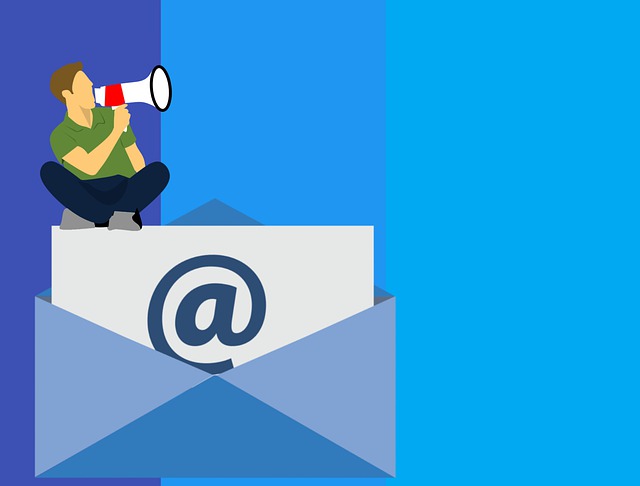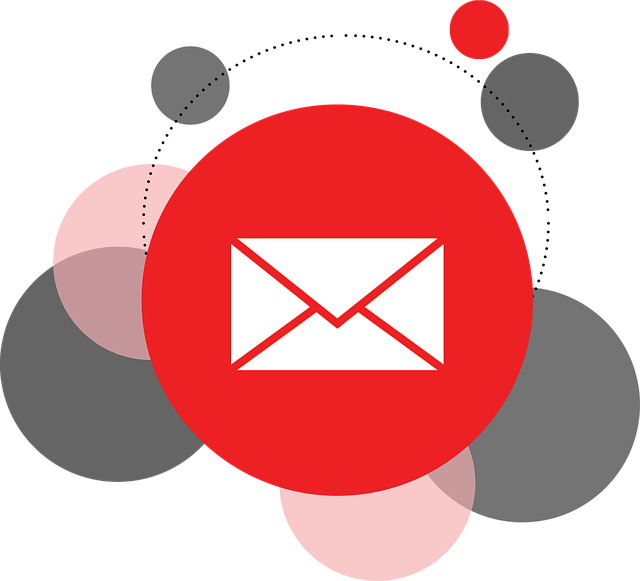Picture this: you’re standing at the helm of your small business, navigating the vast ocean of email marketing. The waves of potential customers crash against your virtual shores, but are you effectively harnessing their power?
In the ever-evolving world of digital communication, it’s crucial for small businesses to avoid common mistakes in email marketing. By crafting relevant subject lines that grab attention, personalizing and segmenting your audience, and avoiding information overload, you can ensure your messages resonate with recipients.
Additionally, optimizing for mobile devices, providing clear call-to-actions, and testing and analyzing your campaigns will maximize their impact.
This article will guide you through these seven common mistakes to avoid, equipping you with the knowledge to steer your small business towards email marketing success.
Key Takeaways
- Crafting relevant subject lines is crucial for increasing open rates
- Personalization and segmentation enhance the effectiveness of email campaigns
- Well-designed and concise emails with clear hierarchy are important
- Testing and analyzing campaigns improve email deliverability and effectiveness of marketing efforts.
Crafting Irrelevant Subject Lines
Don’t use generic subject lines that leave your readers guessing and scrolling past your emails. Subject line strategies play a crucial role in email marketing success. Crafting relevant subject lines that catch your readers’ attention is key to increasing your open rates.
When creating compelling content, make sure your subject line aligns with the email’s purpose and provides a clear idea of what readers can expect inside. Personalization is also crucial. Address your subscribers by name or segment your email list based on their preferences to make your emails feel more tailored to their needs.
Neglecting personalization and segmentation can lead to lower engagement rates and missed opportunities to connect with your audience. So, make sure to avoid these common mistakes and keep your email marketing strategy on point.
Neglecting Personalization and Segmentation
Make your emails feel personal and tailored to each recipient, creating a deeper connection and sparking genuine interest. Personalization techniques and segmentation strategies can significantly enhance the effectiveness of your small business email marketing campaigns.
Here are four key ways to achieve this:
-
Use the recipient’s name: Addressing your subscribers by their name adds a personal touch and makes them feel valued.
-
Segment your email list: Divide your subscribers into different groups based on their demographics, interests, or purchasing behavior. This allows you to send targeted emails that are more relevant to each segment.
-
Send personalized recommendations: Use customer data to provide personalized product recommendations or offer relevant content based on their past interactions with your business.
-
Use dynamic content: Customize your emails with dynamic content that changes based on the recipient’s preferences or behavior.
By implementing these personalization techniques and segmentation strategies, you can increase engagement and improve the chances of conversion. However, be careful not to overload your emails with too much information, as we’ll discuss in the next section.
Overloading Emails with Too Much Information
Email recipients can easily become overwhelmed and disengaged when bombarded with excessive information. This leads to a startling statistic: 75% of recipients delete emails that contain an overload of content.
To avoid this, it is crucial to ensure that your emails are well-designed and concise. Keep your email design clean and visually appealing, with a clear hierarchy of information. Break down your content into easily digestible sections. Use bullet points or numbered lists to highlight important points.
Additionally, consider the frequency of your emails. Bombarding your recipients with daily or multiple emails a day can be overwhelming and might lead to unsubscribes. Instead, find a balance that keeps your audience engaged without overwhelming them.
Ignoring mobile optimization is another common mistake that can hinder the success of your email marketing campaign.
Ignoring Mobile Optimization
Ensure that you prioritize mobile optimization to maximize the effectiveness of your email campaign and provide a seamless user experience for your audience. In today’s digital age, it is crucial to consider mobile responsiveness when designing your emails. More and more people are accessing their emails on smartphones and tablets, so if your emails are not optimized for mobile devices, you may be missing out on a significant portion of your audience. Mobile optimization involves creating emails that are easy to read and navigate on smaller screens, with buttons and links that are easily clickable with a touch. To illustrate the importance of mobile optimization, take a look at the following table:
| Email Design | Desktop | Mobile |
|---|---|---|
| Responsive | Yes | Yes |
| Non-responsive | Yes | No |
As you can see, non-responsive email designs are not mobile-friendly, which can lead to a poor user experience. Transitioning into the next section, failing to provide clear call-to-actions can also hinder the success of your email marketing campaign.
Failing to Provide Clear Call-to-Actions
Don’t miss the boat on potential conversions by neglecting to provide clear, attention-grabbing call-to-actions that practically scream, ‘Click me now!
Ineffective language and poor email design can be major obstacles to achieving successful conversions. Your call-to-action should be concise and compelling, using action-oriented words that make it irresistible for your readers to click. Avoid vague phrases like ‘Learn more’ or ‘Click here,’ and instead use specific and persuasive language that clearly states the benefit they will receive by taking action.
Additionally, make sure your call-to-action stands out visually in your email design, using contrasting colors and bold fonts. By failing to provide clear call-to-actions, you risk losing potential customers who may not know what action to take.
Now, let’s move on to the next section about neglecting to test and analyze campaigns.
Neglecting to Test and Analyze Campaigns
Neglecting to test and analyze campaigns can be a missed opportunity to uncover valuable insights and maximize the effectiveness of your marketing efforts. By not testing your email campaigns, you risk sending out messages that may not be optimized for email deliverability.
Testing allows you to see how your emails perform in different email clients and devices, ensuring that they look good and are delivered as intended.
A/B testing is also crucial in email marketing. It allows you to test different elements of your emails, such as subject lines, calls-to-action, or visuals, to see what resonates best with your audience. By analyzing the results, you can make informed decisions about what works and what doesn’t, and optimize your future campaigns accordingly.
So, don’t neglect the importance of testing and analyzing your email campaigns. It’s a valuable way to improve your email deliverability and increase the effectiveness of your marketing efforts.
Frequently Asked Questions
How can I craft subject lines that are relevant and attention-grabbing for my small business email marketing campaigns?
Crafting subject lines that are relevant and attention-grabbing for your small business email marketing campaigns requires strategic techniques.
Start by understanding subject line strategies that work best, such as using personalization, creating a sense of urgency, or teasing valuable content.
Strike a balance between providing enough information to entice readers while keeping it concise.
Remember, the subject line is your first opportunity to capture your audience’s attention, so make it compelling and persuasive.
What are some effective strategies for personalization and segmentation in small business email marketing?
To effectively personalize and segment your small business email marketing campaigns, you can employ various techniques.
Start by collecting relevant customer data, such as purchase history or preferences, and use it to tailor your content and offers.
Implement segmentation strategies by categorizing your audience based on demographics, behavior, or engagement level. This allows you to send targeted messages that resonate with specific groups, increasing the likelihood of engagement and conversions.
By personalizing and segmenting your emails, you can create more meaningful connections with your customers and drive better results for your business.
How can I strike a balance between providing enough information in my emails without overwhelming my recipients?
To strike the right balance in your email content, it’s crucial to find the right tone in your communication. Start by understanding your recipients’ preferences and needs.
Use parallelism to create vivid imagery, captivating their attention from the start.
Keep your messages concise and informative, avoiding overwhelming them with unnecessary information.
Use active voice and contractions to make your emails more engaging.
By finding the perfect balance, you’ll ensure that your recipients stay interested and engaged with your emails.
What are some key considerations for optimizing my small business email marketing campaigns for mobile devices?
To optimize your small business email marketing campaigns for mobile devices, mobile optimization and responsive design are crucial.
Mobile optimization ensures that your emails are easily readable and navigable on mobile devices, while responsive design automatically adjusts the layout and content to fit different screen sizes.
This ensures a seamless user experience, increasing the chances of engagement and conversions.
By implementing these strategies, you can effectively reach and engage your mobile audience, boosting the success of your email marketing campaigns.
What are some best practices for creating clear and compelling call-to-actions in small business email marketing?
To create clear and compelling call-to-actions in small business email marketing, focus on creating engaging content and designing visually appealing emails.
According to a study by HubSpot, emails with a single call-to-action increase clicks by 371% and sales by 1617%.
Make sure your call-to-action stands out with clear and concise language, using contrasting colors and a prominent placement.
Use persuasive language to entice readers and make it easy for them to take the desired action.
Conclusion
In conclusion, when it comes to small business email marketing, it’s crucial to avoid these common mistakes.
Craft relevant subject lines that capture attention, personalize and segment your emails for better engagement, and avoid overwhelming your audience with excessive information.
Don’t forget to optimize your emails for mobile devices and include clear call-to-actions to drive action.
Lastly, always test and analyze your campaigns to improve their effectiveness. Remember, "you never get a second chance to make a first impression." So, make sure your email marketing efforts leave a lasting impact on your audience.




